Art World
San Francisco’s Immersive Picasso Exhibit Transforms the Anti-War Masterpiece ‘Guernica’ Into a Banal Instagram Backdrop
Olivier Widmaier Picasso says his grantfather would have appreciated the show, as he was "a man of freedom.”
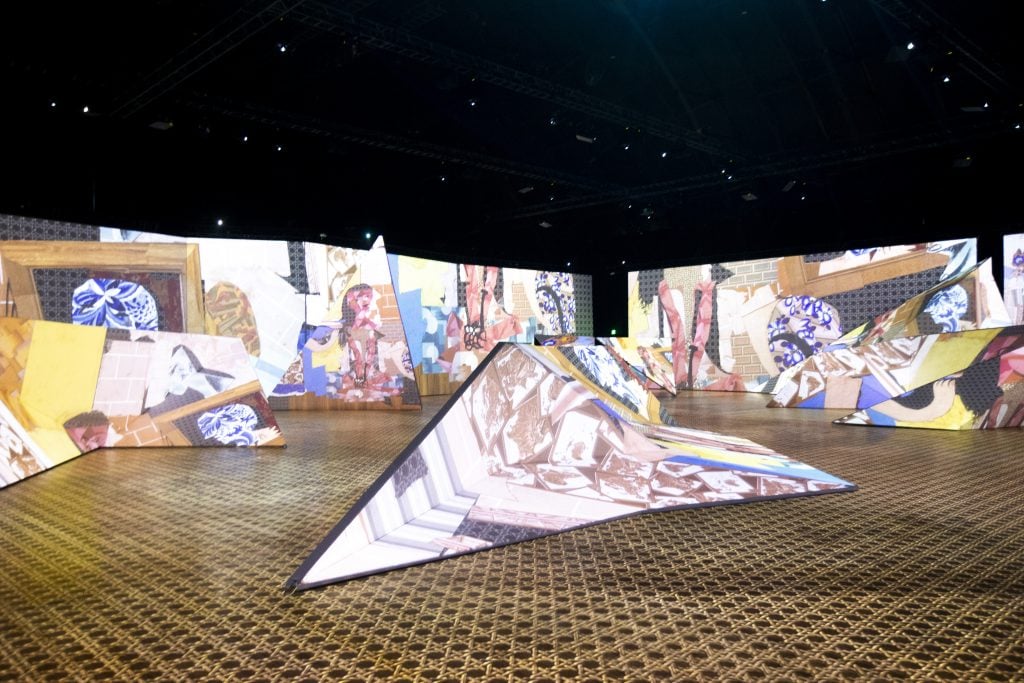
Olivier Widmaier Picasso says his grantfather would have appreciated the show, as he was "a man of freedom.”

Caroline Goldstein

Get excited San Francisco—for the low, low price of $39.99 you can take part in the latest immersive art craze, this one themed around probably the most famous of all modern artists: Pablo Picasso. The show, called “Imagine Picasso,” incorporates images of more than 200 works by the late Spanish artist, whose creativity and experimentation defined the history of art for a big chunk of the 20th century.
A press release for the spectacle notes that the team worked directly with the Picasso Estate, “to ensure the experience meets their high standards.” Olivier Widmaier Picasso, the grandson of Pablo is quoted as saying, “I think this exhibition would have pleased my grandfather a lot because he was, above all, a man of freedom.”
From the looks of the promotional images for “Imagine Picasso,” the paintings that literally turned the conventions of art on its angular head are broken into pieces and fitted across some perplexing sculptural constructions jutting from the floor, serving as Cubist-inspired screens (these are described as “Origami-style volumes,” and are courtesy French architect Rudy Ricciotti). The giant-sized exhibition, full of huge projections, fills 40,000 square feet at San Francisco’s Armory.
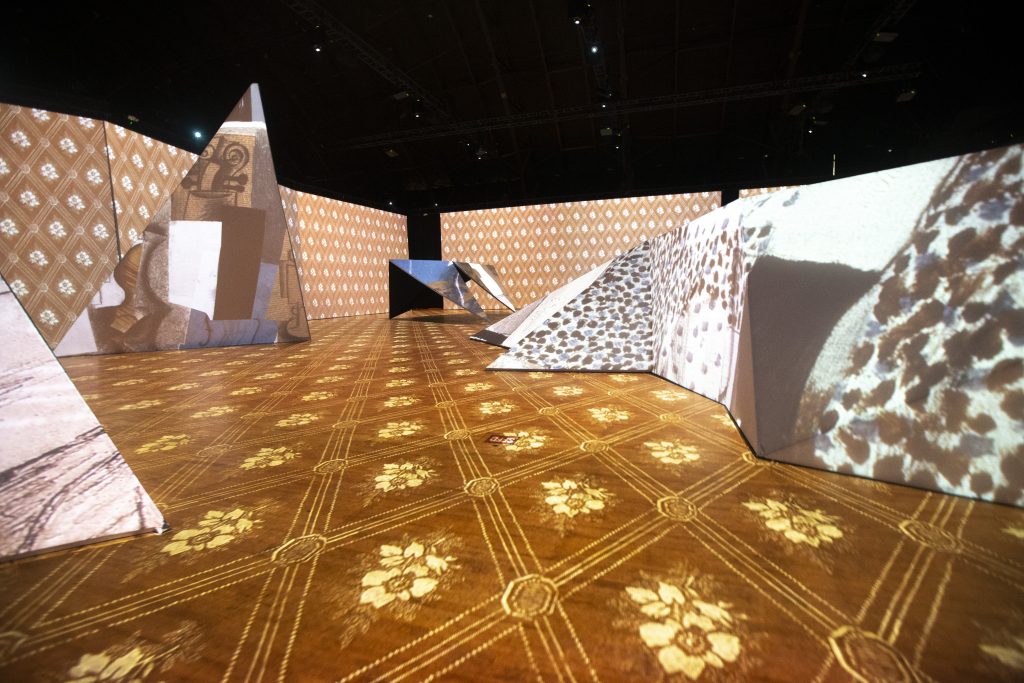
Installation view of “Imagine Picasso.” Courtesy of “Imagine Picasso.”
Unlike other artists who have gotten the immersive experience treatment—like Claude Monet or Vincent van Gogh, whose luminous landscapes are both perhaps better suited to immersive escapism—Picasso is best known for works like Guernica, the mural-sized painting that depicts the horrific aftermath of a 1937 fascist bombing, replete with images of dismembered figures wailing in pain surrounded by writhing animals.
On the show’s Instagram page, you can see a particular scene from “Imagine Picasso” in which fragments of Guernica are projected onto the triangular screens at odd angles. One figure with arms raised, howling in utter despair, is cropped and replicated multiple times.

Screenshot from Instagram taken inside “Imagine Picasso.” Courtesy of “Imagine Picasso.”
Meanwhile, visitors wander around the deconstructed image on a floor bathed in lurid, blood-red light, to suggest the carnage depicted by the painting.
Other installation images from “Imagine Picasso” reveal slightly less macabre uses of Picasso’s work, as when the room is transformed into a fun house-style mashup of the artist’s famed portraits of his lovers, or a sliced-and-diced projection of Les Demoiselles d’Avignon, perhaps attempting to convey its groundbreaking distortions in the language of Instagram.
“It’s important that people of all ages, backgrounds and artistic knowledge have the same opportunity to experience his works,” creator Annabelle Mauger said in a statement. “Immersive exhibitions open the door for younger generations to celebrate his work, allowing Picasso’s legacy and influence on the arts to live on.”
“Imagine Picasso” is not the first recent collaboration by representatives of the artist’s estate to attract attention in recent months.
In late January, Marina Picasso, the artist’s granddaughter, and her DJ son, Florian, announced a plan to release 1,000 NFTs based on a ceramic bowl along with a song inspired by the collection performed by John Legend and Nas. Other members of the family objected to the plan. In the end, it was Florian’s work that debuted on the blockchain, and a week after the sale began, 900 of the 1,000 NFTs remained unsold.
Will “Imagine Picasso,” which is making its U.S. debut in San Francisco after appearing in both France and Canada, be a hit to match Picasso’s status in art history? At least one local critic, KQED’s Sarah Hotchkiss, said she “didn’t hate it,” though the San Francisco Chronicle‘s Tony Bravo was less positive. It’s open through March 27.
Below, see more images from “Imagine Picasso.”
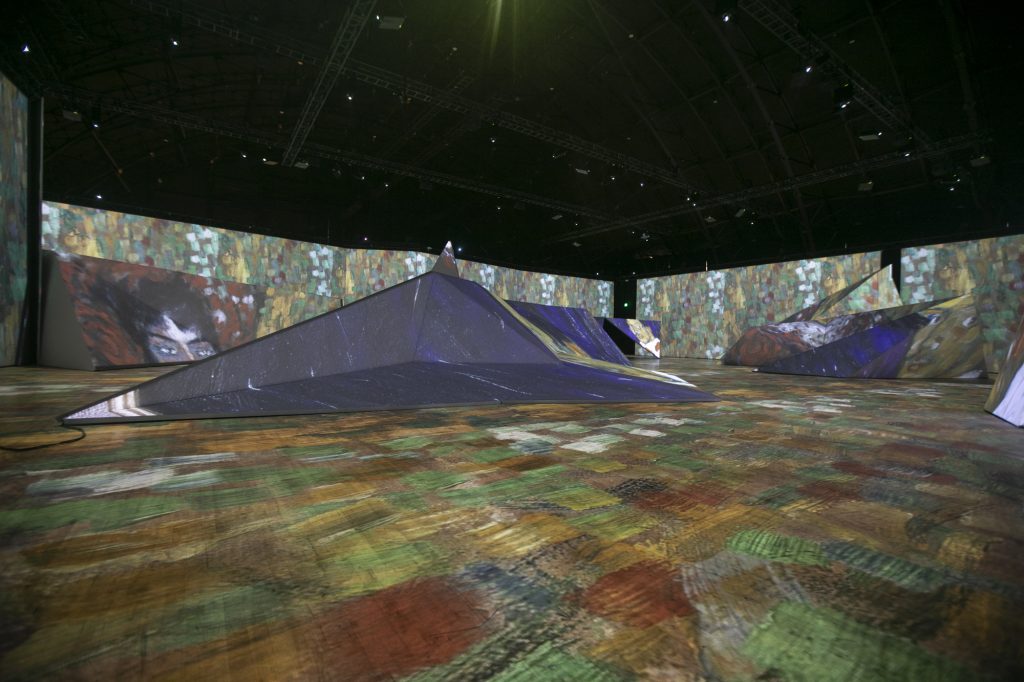
Installation view of “Imagine Picasso.” Courtesy of “Imagine Picasso.”

Installation view of “Imagine Picasso.” Courtesy of “Imagine Picasso.”
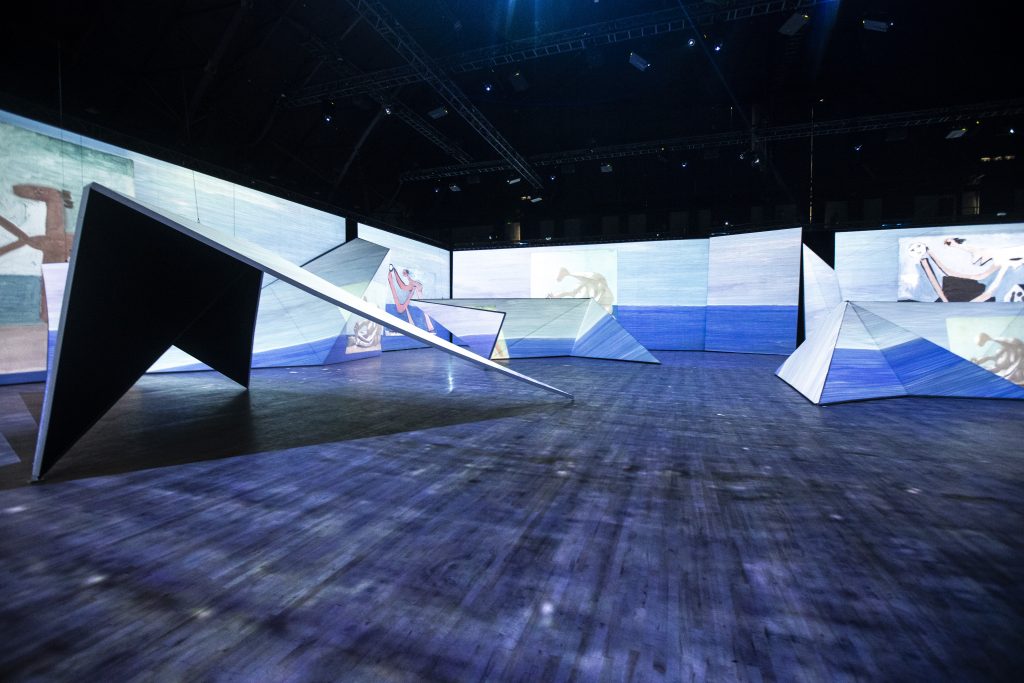
Installation view of “Imagine Picasso.” Courtesy of “Imagine Picasso.”
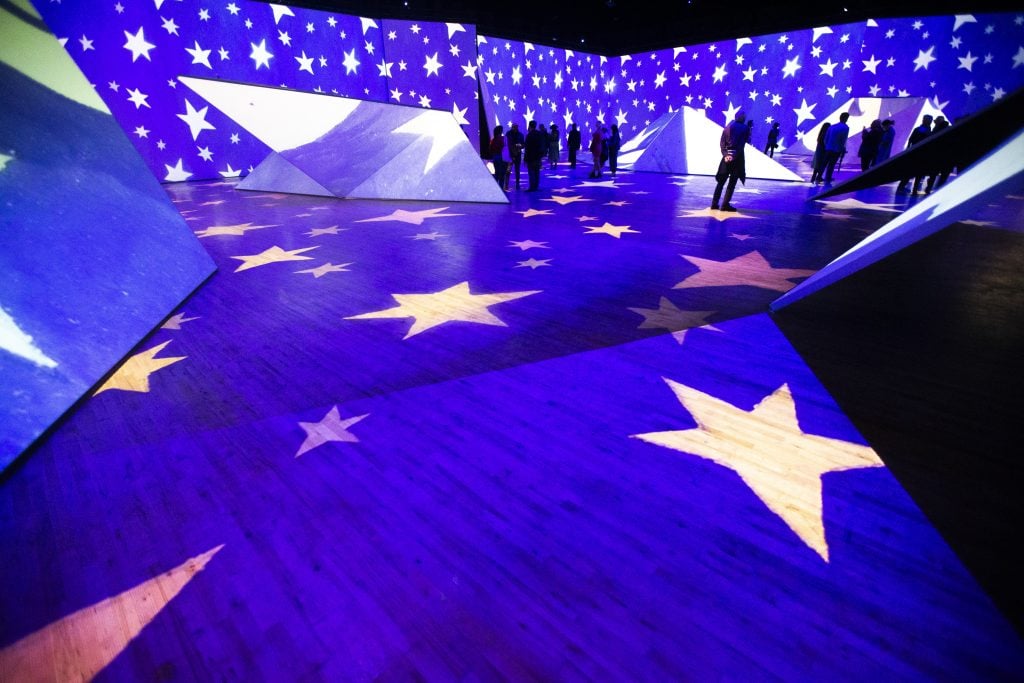
Installation view of “Imagine Picasso.” Courtesy of “Imagine Picasso.”